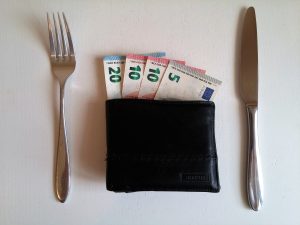 One of the most powerful tools available to businesses when it comes to marketing psychology is reciprocation and it should be immediately integrated into their existing sales strategy and be allowed in their Intelligent Billing system (firstly by allowing zero cost items to be added to invoices – read on for more information on that!). It is extremely powerful. Human beings have this natural inbuilt obligation to give back to others who gave something to us. This thinking works subconsciously and the limbic system in our brains drives it. It creates that need or desire to return or repay favours. As human beings, we don’t like to owe anything to other people.
One of the most powerful tools available to businesses when it comes to marketing psychology is reciprocation and it should be immediately integrated into their existing sales strategy and be allowed in their Intelligent Billing system (firstly by allowing zero cost items to be added to invoices – read on for more information on that!). It is extremely powerful. Human beings have this natural inbuilt obligation to give back to others who gave something to us. This thinking works subconsciously and the limbic system in our brains drives it. It creates that need or desire to return or repay favours. As human beings, we don’t like to owe anything to other people.
Here are a few examples to help you understand it at a deeper level
Do you like to send Christmas cards? Do you ensure that they reach at the right time? If you do, you already know how important Christmas cards are. However, one day you open your door and get a delivery from the postman. You find out that you just received a Christmas card from an old neighbour, distant family member or an ex colleague or from someone you haven’t sent a card. Your first reaction, most likely, would be to buy a card and send it to them in return.
Take another example of your guest list on your wedding date. It most likely consisted of people who had invited you for their own wedding.
If you have a dinner with someone and they pay the bill, it is likely that when you next meet up, you would want to return the favour. These are just a few examples of reciprocation and how it influences our thought patterns and thinking.
Here is how these principles can be applied to business
A series of experiments were conducted by The Diner to increase the level of tips. In their first experiment, a free mint was given with the receipt by the waiter, and this led to an increase in tips by 3%. In another experiment, two mints were given with the receipt by the waiter and this led to an increase in tips by 14%. The real magic happen in the third experiment when the tips increased by a whopping 23%. In this experiment, one mint was left with the receipt by the waiter but the waiter returned and then left a second mint. It was done to make the customer feel that the waiter likes them.
If these experiments have prompted you to put in a bulk order for import of mints, hold that thought. Reciprocation principle can be applied to businesses in a variety of ways to achieve increase in sales, leads as well as conversion rates. Here are a few tips:
Invoices
Take a close look at the invoices you give to your customers. Do these invoices include everything? Chances are they are a few services that you provide in-kind and which are not part of the invoices. For instance, if you provide any service or monthly report to your customers and do not charge for it, it should be on the invoice with zero cost. It will demonstrate that you are providing additional value to your customers.
Networking
One of the greatest ways of using the principle of reciprocation is through networking. It can be done personally or through LinkedIn. If you introduce someone and it results in a sale or another business benefit, it will trigger that reciprocation emotion in your contact. It’s incredibly positive and something I do regularly for people I really value within my network.
Referring Business
I work with a lot of specialists and refer business to them on a regular basis. With a service that is clearly defined and the right partners, referring business is one of the best ways to achieve reciprocation and get referrals back from your partners in return.
Sharing your knowledge such as through blogs, videos, helpful articles, advice and white papers are a way of providing useful information to a wider set of people. If you are giving this information for free and it is beneficial to the recipients, you will achieve reciprocation through enquiries over a period of time.
